Logitech
Logitech G433: one more wire, less audio qualities
Aprox. 91€ - see price -
Logitech had impressed us with the performance of its latest wireless gaming headset, the G533, which however suffered from limited usage possibilities due to the total lack of wired connectivity. Here now comes the G433, which Logitech promises us to use the same transducers, this time assembled in a more traditional wired headset - still supplied with a mini USB sound card ensuring compatibility with the 7.1 virtual DTS Headphone: X.
Our review
Ergonomics
In accordance with Logitech's new habits, the G433 sports a very sober and discreet design. The only touch of originality concerns the earpieces, completely covered, even on their backs, with the same "sport mesh" fabric as the pads. The construction does not seem to show any particular weakness when unpacking (no creaking hinge or play in the guides of the roll bar, for example), but it is still not very attractive: the visible screws are legion, as well as the slightly too protruding edges.
Little to say, however, in terms of comfort, very satisfactory. The foam pads are certainly quite firm, but the very contained weight of the helmet (259 grams) and the great flexibility of its arch are enough to ensure never excessive pressure on the temples or the jaw. Corollary of all this: the sound insulation is however quite low; and that we use one or the other of the two pairs of earphones included in the G433 box, in "sport mesh" or in microfiber. The latter also have no effect on the sound reproduction of the headphones, and the only difference in use between the two is a matter of comfort: the microfiber is a little softer on the skin, but generates more perspiration than sport mesh is certainly a bit rough, but also hydrophobic and very well ventilated.
The G433 is delivered with two detachable cables, one of 2 meters intended for sedentary use, the other of 1.5 m dedicated to open the doors of nomadic use to the helmet. Let's start with the first: dressed in a braided nylon sheath, it includes a control box with a volume control strip (analog), and a switch allowing to open or cut the gooseneck microphone. It connects to the headset with a proprietary 5-point mini-jack, and ends at the other end with a 4-point mini-jack. In turn, this termination can be stored either in a game controller (PS4 or Xbox One), or in the external USB sound card supplied with the headset - using this sound card on a Windows PC is the only way to '' Access the DTS Headphone: X virtual surround function offered by the headset. Last possibility, use the adapter provided to separate the headphone and microphone signals on two 3-point mini-Jacks, and thus use the headphones with any internal standard PC sound card.
Now let's move on to the "mobile" cable, surrounded by a standard and not braided plastic sheath - a judicious choice which makes it possible to avoid as much as possible the noise annoyances linked to solid conduction when we are in motion. Its remote control does not include any volume adjustment, but all the same a call pickup button as well as a microphone, which therefore allows you to answer a call on your phone even if you have removed the headset from its neck microphone removable swan.
The list of accessories supplied is finally concluded with a flexible fabric storage pocket.
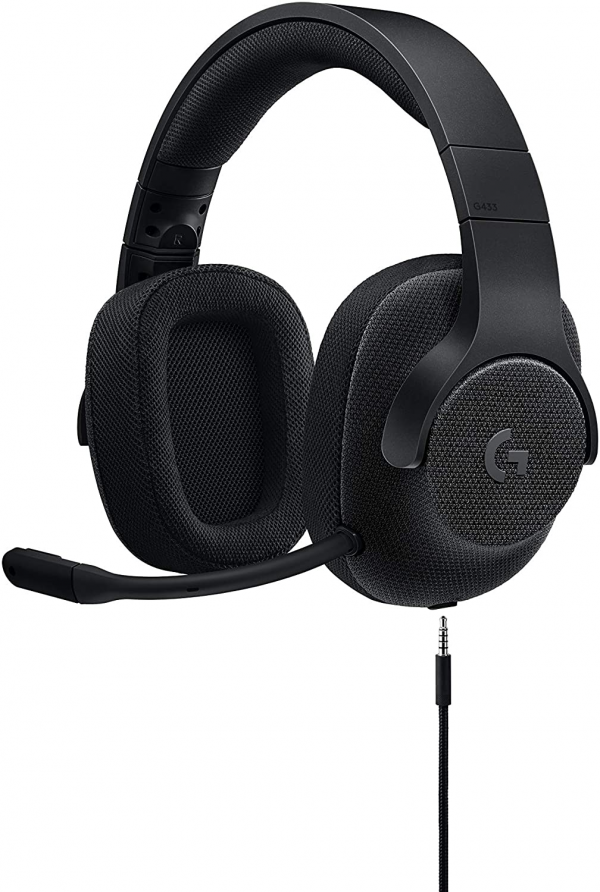
Software quality
No change in sight for the Logitech Gaming Software, which has not moved an inch since the last time we met it, with the G533.
In the absence of shortcut buttons on the headphones or the possibility of wireless use, the utility of the software is reduced to two functions, but it still performs as satisfactorily: adjusting a 10-band equalizer, and activation of the DTS Headphone: X virtual surround. As always unfortunately with Logitech, the software and its associated functionalities are only available on Windows, and inaccessible to users of any other operating system.
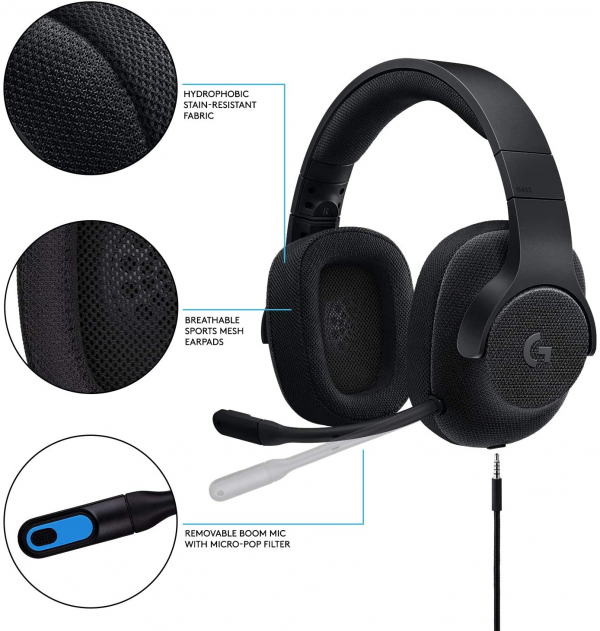
Audio
The Logitech G433 may use the same transducers as the G533, but unfortunately it does not quite repeat the masterful audio performance of the latter.
We cannot surmise with too much certainty what is causing this difference in quality: difference in the acoustic design of the earpieces? Effects of DSP integrated into G533 but necessarily absent from G433? The fact remains that where the first displayed an almost perfectly linear frequency response, the second allows significant coloring. The whole remains generally balanced, and manages to avoid any overly flagrant masking phenomenon, but the naturalness of the restitution is not beyond reproach. We particularly regret this age-old defect of gaming headsets: a dip in the presence zone (between 3 and 6 kHz) certainly not disproportionately pronounced here, but still enough to generate a fairly blunt sound and voices a little too veiled. On PC, it is certainly possible to mitigate this problem by means of the equalizer of the Logitech software, but we would have preferred to be able to dispense with it. Another source of dissatisfaction, the extension in the bass is quite limited, and the frequency components below 50 Hz are certainly well reproduced, but with a notable energy deficit.
Fortunately, there are all the same certain qualities of the G533 which have been preserved on the 433. We are talking here about the reactivity of the membranes and the dynamism of the sound message, still just as exciting. The precision of the transients makes it possible in particular to establish a very precise sound scene, not necessarily very wide or deep, but with perfectly defined spatialization.
The DTS Headphone: X mode offered on PC via the USB sound card of course draws a great advantage. As always, here we reiterate all the good that we think of the virtual surround of DTS, which builds a convincing spatialization while preserving as much as possible the naturalness of the sound signal. You just have to make sure you have selected the reference DTS 7.1 mode in the Logitech software, and above all avoid the "First Person Shooter" and "Logitech Signature Studio" modes, which only add to the signal an echo and a perfectly useless artificial reverberation.
The G433 requires a signal of 185 mV RMS amplitude to reach our reference 94 dB SPL at 1 kHz. For nomadic use, this is a relatively low sensitivity, which risks being all the more annoying as the sound insulation, as said above, is far from ideal. We can still settle for as long as we have a source device with a headphone output of correct quality. As for the USB sound card, its output signal can reach 153 mV RMS. With these two data placed end to end, the G433 can reach a peak volume of around 115 dB SPL in sedentary use. No chance, therefore, that we may be short of power.
Let us note in passing the very good performance of said sound card: with its negligible distortion, its crosstalk less than -85 dB and its dynamic range of 86 dB, it provides a signal of impeccable transparency.
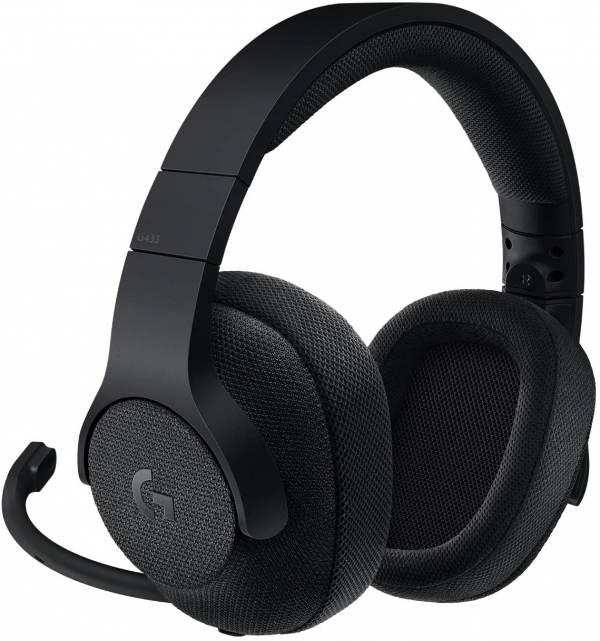
Microphone
In exchange for its removability, the G433's microphone has unfortunately lost a bit of comfort in use. In addition to the offset of the mute button on the cable, the malleability of the pole is not ideal, and it may tend not to remain perfectly in place after being positioned by the user. Nothing insurmountable however.
On the other hand, and significantly more significantly, the quality of the voice capture is a pleasant surprise on the part of Logitech. This aspect is almost systematically the Achilles heel of Logitech headsets, but it is not the case here: the restitution of the voice is natural, perfectly intelligible, and quite effectively rid of the surrounding noises. Only the sensitivity of the microphone, still quite low, can still be a problem for people who are not used to raising their voices during their online games.
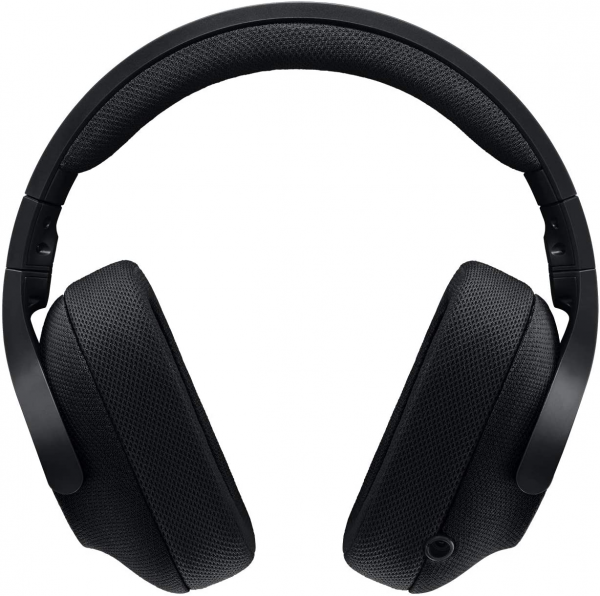
Conclusion
We would have liked the G433 to be a wired clone of the G533, but this is unfortunately not quite the case. Its sound performance is certainly still above the average of gaming headsets, and can also boast of a rather pretty virtual 7.1 on PC, but they still show a significant drop compared to the big brother. Unless you absolutely want to have a wired connection, it is therefore better to head for the G533 ... especially since when it is launched, the G433 is positioned at an almost similar price.
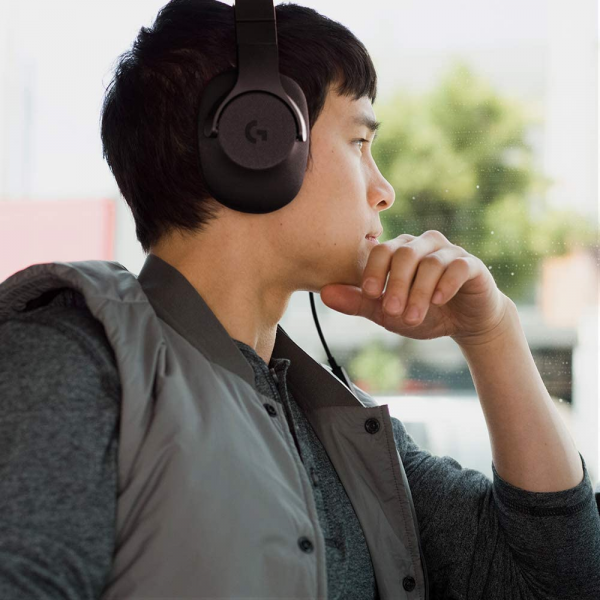
Reviews

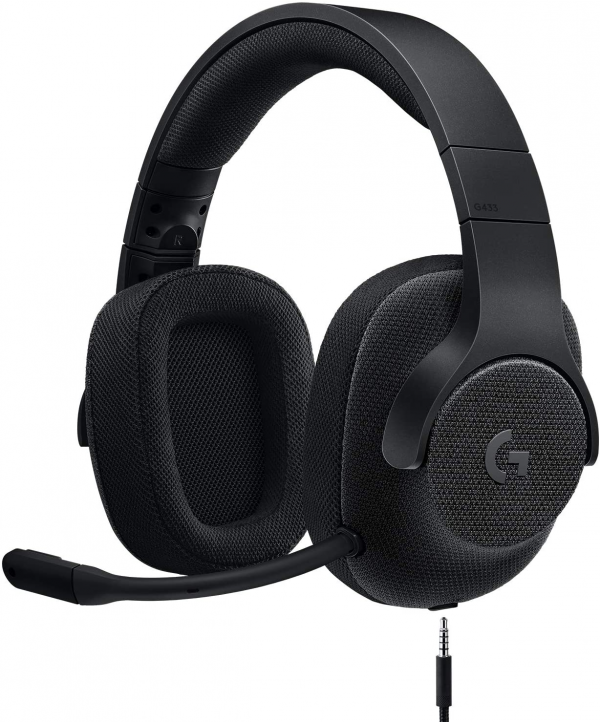
Great-- but tweak the equalizer settings
Great headphones for music and PC 7.1 gaming.
Knocked 1 star off since you must tweak the equalizer settings to get the most out of it and improve the sound output --- Download the drivers, then head to the equalizer settings and use the following recommendation:
32 Hz: 8
64 Hz: 7
125 Hz: 1
250 Hz: 2
500 Hz: 2
1 K: 3
2K: 4
4K: 5
8K: 9
16K: 8
Enjoy
---------------------------------------------------------- ---------------------------------------------------------- ------------
1 year later: Update
These are the easily some of the best headphones that I own. I specifically use these to enjoy music and PC games and and I can't say enough good things about these given my year long use. What is important: The lightweight, durable, and super comfort for extended sessions is weapons grade performance in my book. I need to add I that I really love the large material ear pads as opposed to leather type ear pads. They remain cool, soft, and ultra comfortable for all of my needs. 1 year later and im still a BIG fan of these.
Cheers,
Not the greatest, but still decent
This headset was okay. After receiving the headset I spent about 5 hours playing Rainbow 6 Siege, testing out the companion software, applying the recommended audio tweaks and comparing it to my daily drivers (pun intended). I wasn't expecting greatness but they definitely fell short especially given the price point. They're not a bad set by any means, just way out of their league for the money. I couldn't escape this hollow feel in the sound quality. Everything seemed echoed or distant. Underwhelming bass. Consistently flat mids and highs, until you reach the upper end of their thresholds. However at that point they can become tinny. An overall muted quality to the audio. I feel as if Logitech scaled down the output to preserve the lifespan of the drivers. The cabling is excellent with options for any occasion. The mic was on the upper end of okay. The fabric material on the ear cups was some how not as comfortable as I imagined, but over all the headset was comfortable enough for my entire session. On a daily basis I use my Conwin E7s and Astro A40s. I wasn't expecting them to surpass my Astros, however I figured they'd give my Conwin ($ 40-60) a run for their money. Not really the case as far as I'm concerned. For a $ 50-100 value I'm honestly a little disappointed. But I feel many will definitely find this headset to fall somewhere between decent and good.
TL; Dr
-Overall decent performer
-Great cabling and accessories
-Adequate mic
- Audio underwhelming
-Overpriced compared to the competition.
One of the best headsets I have ever had, especially for the price!
This is my first review ever on a product, but I love this headset so much, that I decided to leave a review. To start off, I was using the Logitech G430's for roughly 4 years until just recently because the headset broke. Coming from the G430's to these, I can easily say that this is a HUGE step up. Build wise, its solid all around. The adjustable top for head size is smooth, easy to adjust and firm. The detachable mic is VERY flexible and can sit in pretty much any position / distance from your mouth that you may need. The only downside for me personally is, I wish the mic could slide up when not in use and slide back down when you need to use it such as the G430's had. Its not a huge "con" because in theory, if you aren't using the mic, you can just unplug it. The comfort of the ear pads is easily 10 out of 10! Right out of the box they come with ear pads that have the same "Hydrophobic, stain-resistant fabric" as the rest of the headset which is a very nice look, but for me they were very uncomfortable. Luckily however, Logitech includes a second set of ear pads that you can change to if you please and the changing process is very easy. The second set of ear pads are by far my favorite feeling pads I have had / tried while wearing any kind of headset / headphones. They are super soft and pretty squishy so hours upon hours of gaming will be easily achieved with maximum comfort. They are slightly tight on the head for a while, but once you break them in, they are so comfortable. Lastly, the sound is overall beautiful even right out of the box. I recommend downloading Logitech's software however, because from there, you will have a wide variety of ways to customize the sound to your exact liking. The directional sound is also spot on, especially while playing games that rely on sound as a huge factor. Overall, this headset for me is a 10 out of 10. I truly recommend this to anyone that is in the market for a quality headset without breaking the bank.
Pros:
+ Well made from end to end. Cord and all
+ Comfortable even with hours of non-stop use
+ Great detachable mic with its own build in pop filter
+ The look of the headset is very sleek and modern / minimalistic
+ Extra set of ear pads for even more options for comfort
+ Great sound, directional sound, bass, clarity ect. (with more settings in the software)
+ Works with PC, PS4, PS4 Pro, Xbox One, Xbox One S and the Nintendo Switch (all with ease)
Cons:
- A little tight on the head right out of the box. After a few days of use it gets better.
- The mic cannot slide up and down for non use (which isnt a huge cone because you can simply detach the mic)
- Default ear pads are not the most comfortable (in my opinion)
- Had a problem where I would hear myself in the headset through the mic when I would launch programs that picked up the use of the mic. I googled it and others have had the same problem. It was a very simple fix and doesnt come back after fixing it.
the aesthetic on this product is amazing. But there are few minor issues (sort of) ...
Been a Logitech fanatic for years & I gotta say, the aesthetic on this product is amazing.
But there are few minor issues (sort of)
1. The elasticity of the headband is on the 'tight' side. I know it's adjustable but that doesn't change its grip.
2. The mic filter embedded doesn't really do it's job. I had to purchase a mic filter named 'Tetra-Teknica XFFZ5P-BLK Lapel & Headset Microphone Windscreen' (look it up) in order to decrease wind noise or pop to be called. See photo.